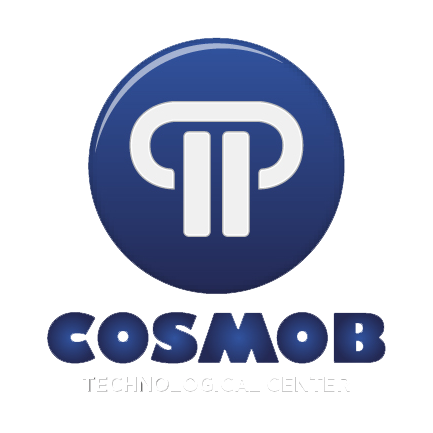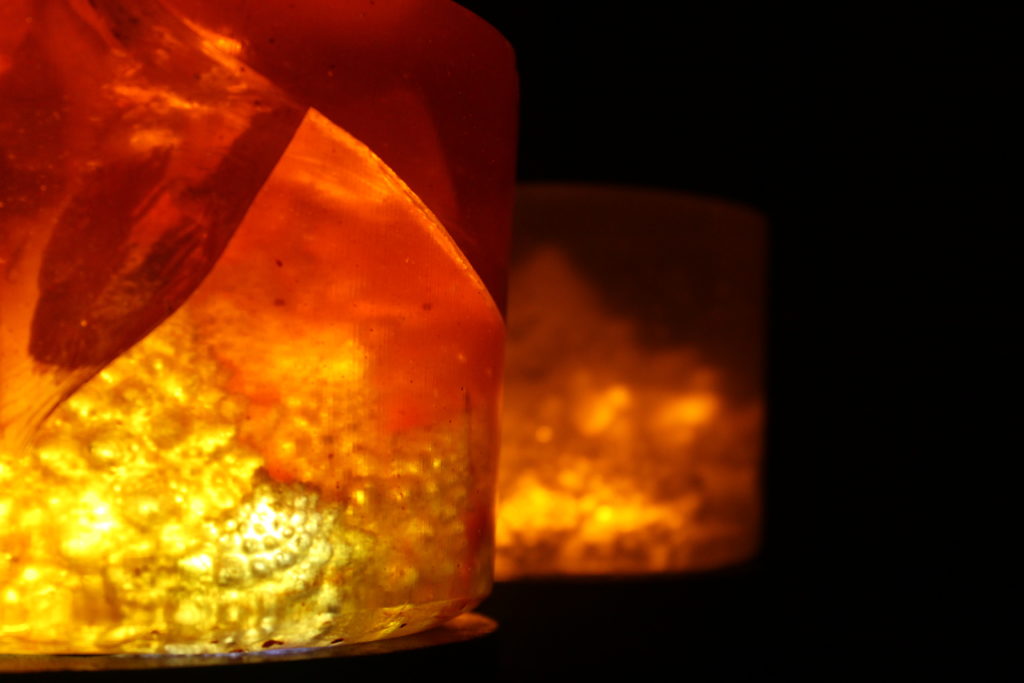Ivette Sanchez Espinoza, young artist of the Academy of Fine Arts in Urbino, has designed two sculptural works entitled “Ch’usaq” (“empty” in Quechua), whose accomplishment was completed last week within Fablab Pesaro. The completion of this project has in fact required the use of digital manufacturing machineries.
The results are essentially two exhibition lamps made with red acrylic fiberglass, inside which it is possible to see the silhouette of natural forms.
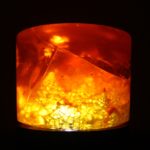
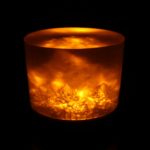
Lamp 1: “cricca”, internal chipping, less transparency and white light illumination.
Lamp 2: greater transparency and illumination with yellow light.
How is the project born?
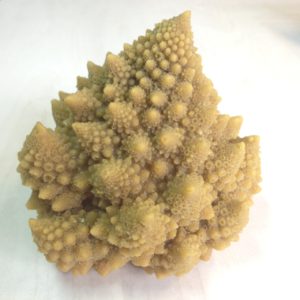
The design idea starts with the intention of using the sculptural mold technique in order to get a complex geometric figure: the “romanesco” broccoli.
The two works realized intend to depict the conflictual relationship between nature and man; a nature that, though visible, and therefore concrete, is at the same time intangible, therefore non-existent, for man and contemporary society.
The choice of materials reinforces this concept: fiberglass, a synthetic material, contrasts with the natural forms.
Each choice of material and colour is subordinate to this concept of nature-man relationship: the dark colour of the base is in contrast with the transparency of the resin as well as the diversity of the lamps themselves in the interior details, in brightness and in colour has the same meaning.
The two lamps are part of a larger project that includes two other works called “Cuestión de perspectivas” inspired by R.Murray Schafer’s “Sound Landscape”.
How is the collaboration born?
The FabLab Pesaro has provided the artist with the skills and tools needed to develop some of the details of the works / lamps: the bases of support and the lighting system.



The bases were made with solid wood by using the Shapeoko cnc cutter, able to recreate the profiles so as not to break the continuity of the lines with the top of the works.
The lighting was made with the Roland SRM-20 precision CNC cutter; the printed circuit board was designed with “Eagle” software by Nicola Scalzotto.
Finally the FabLab Pesaro technicians recreated a digital copy of the mold from which the two lamps were made. Three-dimensional scanning of the object was achieved using the photographic technique thanks to the “123D Catch” software.
In conclusion
The Laboratory is a place open to all those who intend to create and innovate; a place where experimentation and technology combine to form new and “infinite” solutions: Fablab Pesaro is also art!
Concept and Realization: Ivette Sanchez Espinoza, student and sculptor.
Layout and printed circuit design: Nicola Scalzotto, designer.
Project Tutor: Christian Gabbani, FabLab Manager.
